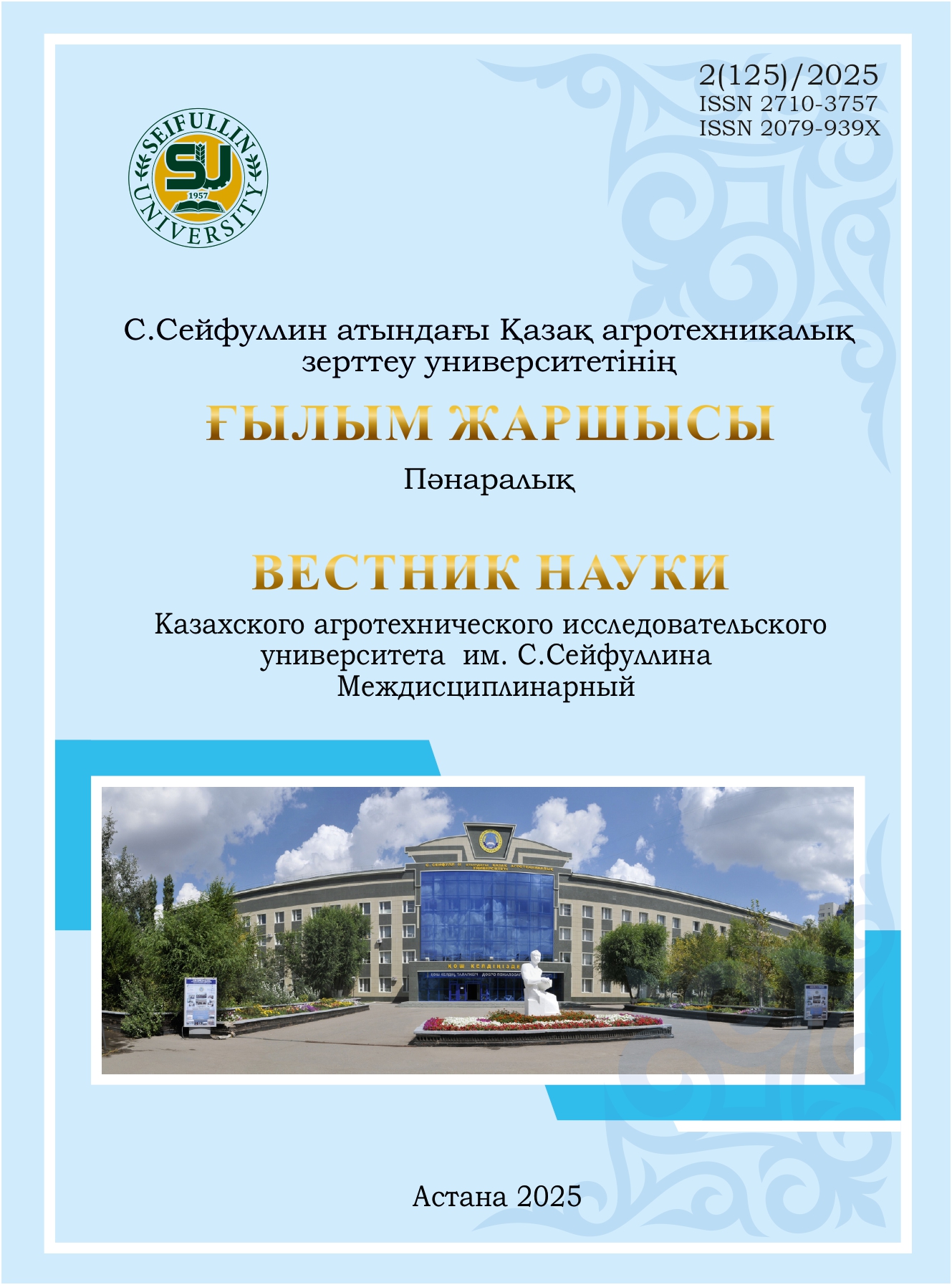Development of tillage and seeding machines for organic agriculture adapted to the soil and climatic conditions of Northern Kazakhstan
DOI:
https://doi.org/10.51452/kazatu.2025.2(125).1901Keywords:
tillage and seeding machines; seed sowing; seeding depth; seeding accuracy; draft resistance; combined coulters.Abstract
Background and Aim. The current condition of the agricultural machinery fleet presents challenges to the development of modern grain crop cultivation technologies, leading to disrupted fieldwork schedules, crop losses and reduced sown areas. Although the import of agricultural machinery has not fully resolved the supply issue- since much of the imported equipment either does not meet agrotechnical requirements or is not adapted to the soil and climatic conditions of Northern Kazakhstan such machinery is often unaffordable for farmers and remains underutilized throughout the year. In this context, the primary objective of our development efforts is to provide farmers with reliable, domestically produced equipment.
Materials and Methods. For the trials, sowing was carried out with spring wheat varieties "Karabalyk 90" and "Astana." For seeders with combined openers, sowing was conducted using the wheat variety "Shortandinskaya 95 Improved", the barley variety "Sabir," wheatgrass seed "Burabay," and awnless bromegrass "Akmolinsky Emerald." In the development of the machines, modern mechanical engineering technologies were used, including statistical research methods, control and management systems, computer-aided design (CAD), and 3D modeling of working components. Assembly drawings were created using SolidWorks software.
Results. According to agrotechnical evaluations, the experimental seeders outperformed serial production seeders in terms of uniform seeding depth and plant distribution across the feeding area. The energy evaluation showed that at a speed of 10 km/h and a seeding depth of 4 cm, the experimental seeder with chisel-disc-chisel openers had a draft resistance of 3.83 kN, while the seeder with shoveldisc- shovel openers exhibited 5.22 kN. In contrast, the serial seeder exhibited a resistance of 9.55 kN. The seeder designed for sowing non-free-flowing grass seeds demonstrated a draft resistance of 4.6 kN at the same seeding depth. The draft resistance of the wide-cut seeder PK KATU was 8.2 kN. Laboratory and field tests indicated that its draft resistance per meter of coverage was 11.3% lower than that of the serial seeder.
Conclusion. The developed experimental models of seeding machines ensure the technical, technological, and economic competitiveness of domestically produced equipment compared to foreign agricultural machinery complexes. They reduce operational costs by 15% and are projected to yield an estimated annual economic benefit of over 4,000,000 tenge per machine.

